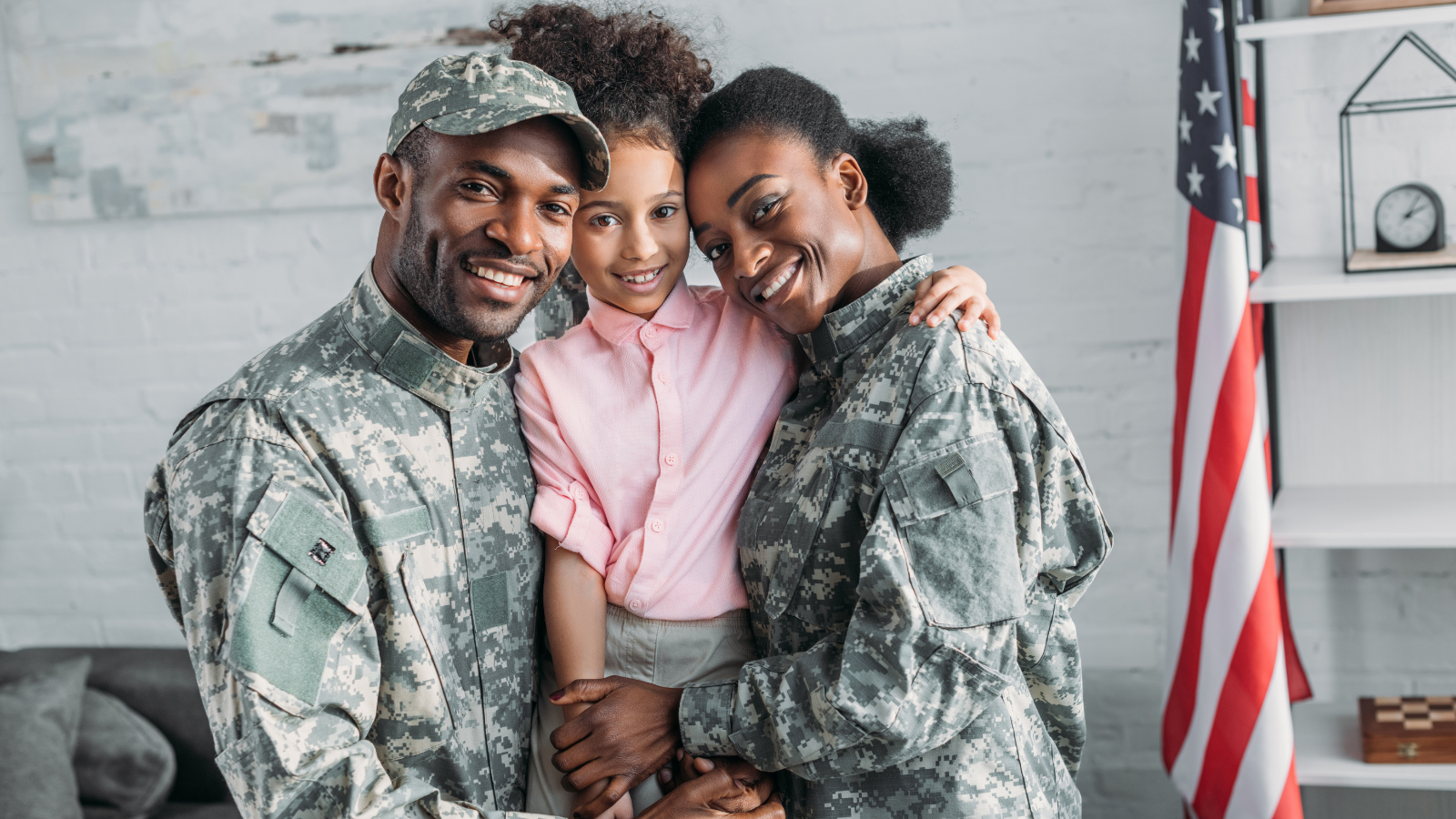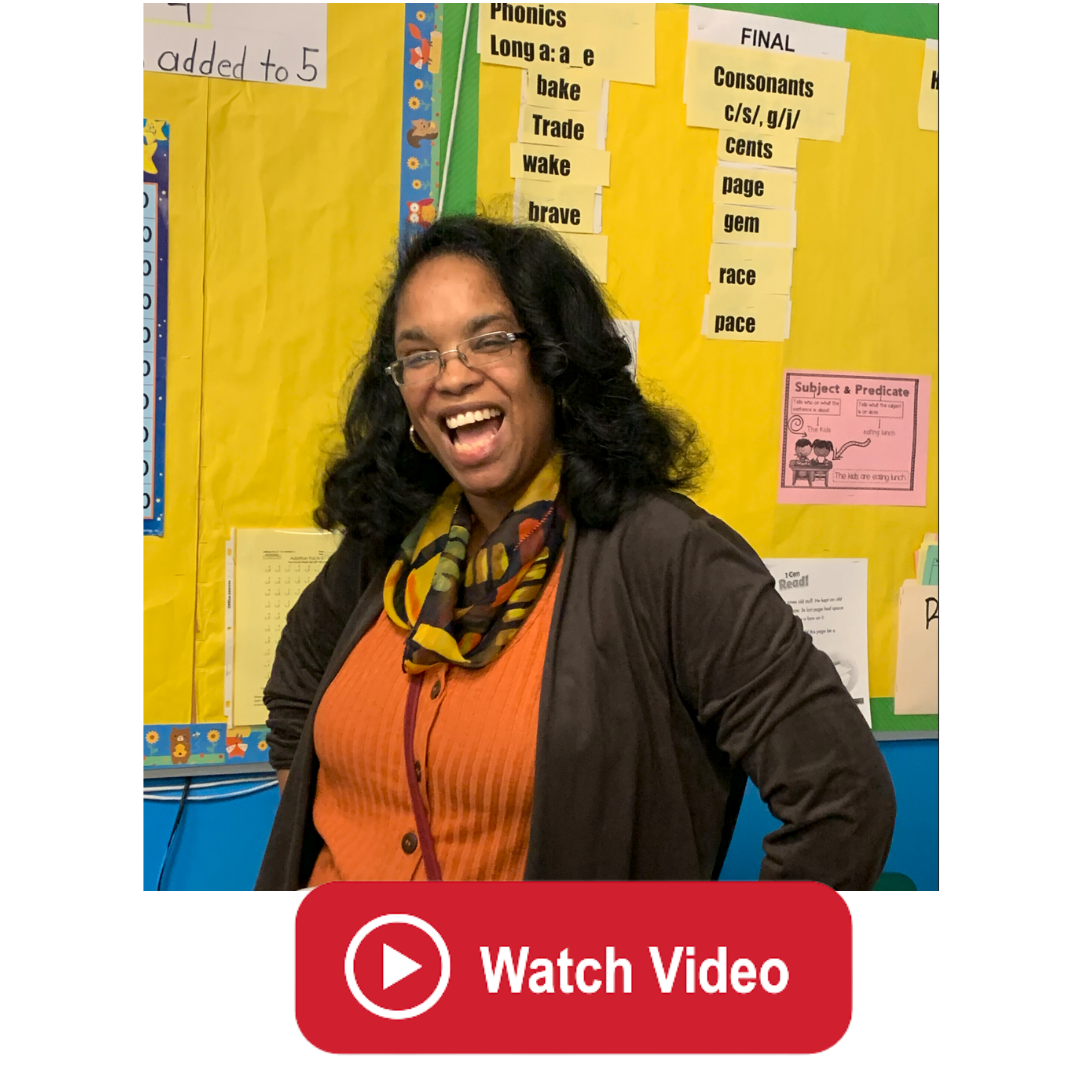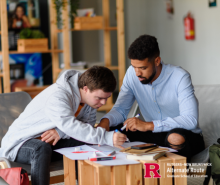6 Ways Educators Can Support Students of Military Families

Within the past decade, two million American children have lived through a parent or guardian’s deployment. And in those 10 years, deployments have only increased, putting children in mental-health situations they are often not prepared to tackle.
We’ve known for years that deployment creates uncertainty and stress that negatively affects children. A 2010 study of 640,000 children between ages 3 and 8 found a connection between deployment and increased mental-health and behavioral visits to professionals.
Specifically, the study found “mental and behavioral health visits increased by 11% in these children when a military parent deployed; behavioral disorders increased 19% and stress disorders increased 18%. Rates especially increased in older children and children of married and male military parents.”
Educators have a huge opportunity to create a safe space and positive mental-health experience for students of military families. Students spend a big chunk of time in the classroom and if they feel seen, supported and understood, their learning experience can be transformed.
Luckily for educators, supporting students of military families simply means taking the tools you already have and adapting them to a new situation. Below are six ways you can transform learning for your students living the military life.
Be clear with expectations
Some children in military families have attended multiple schools, depending on how often their family member is reassigned. For students that have seen many different schools, teachers can help them adapt by clearly communicating classroom expectations immediately.
This is helpful to the student because each school and classroom have their own culture to navigate, with norms that aren’t necessarily understood unless a student is acclimated. Teachers can help students in military families understand their current culture by explaining school-specific customs, helping to identify school activities that may be engaging to them and being available to answer questions.
Check in with the students and provide resources
Students of military families have a very different situation compared to their peers, so it’s important that educators treat the situation in a unique way. Having a regular, private, one-on-one with the student is a great way to address their needs and check in on where they are struggling, what they are feeling and where they feel they are thriving.
If the student is - understandably - struggling, connect them with support resources that can help. For example, a school counselor that can help the student navigate their learning responsibilities is one way to assist
A way educators can go above and beyond for their student is to research virtual or local resources that offer support specifically for students of military families. Some great virtual resources include Military Kids Connect, Our Military Kids, Salute the Kids and Armed Services YMCA.
Know how to recognize academic gaps
Students who are part of military life have different challenges than their peers. Frequent moves can distract from learning, as well as disrupt students from establishing healthy routines and relationships. There is also the reality that these students may experience traumatic loss, exacerbating their stress and complicating their learning experience.
It’s important that educators are mindful of these stressors and aware of key behaviors to look out for, including disengagement, acting out and academic performance, to name a few examples. A great resource for educators to explore is the Military Child Education Coalition (MCEC), which provides guidance for educators working with students of military families.
When teachers are aware of the obstacles students of military families face, they are more equipped to respond in a way that is supportive and helpful. For students, a little research on their teacher’s behalf goes a long way.
Help them feel seen
As an educator, there is a big opportunity to bridge the gap between students of military families and their peers by incorporating various perspectives into lesson planning. Military life is a reality for millions of children, so it’s important to communicate through examples that many families have experiences like the one your student has. When humans make connections and build deeper understanding, empathy grows.
Educators can foster empathy by having the class write letters to deployed veterans or - if the parent or guardian is comfortable - have them speak to the students virtually about what deployment is like and answer questions. Every student and family is different, so it’s important to consider their comfort levels and boundaries when getting them involved.
For students and families that are more protective of their personal experiences, educators can still make connections through examples of other military families. Consider videos that have interviews with active duty members, veterans and/or their families. This general approach will take the spotlight off the student while still helping them feel seen.
These little acts to incorporate students of military families not only make them feel seen but remind them that they are special and unique.
Invite a veteran to speak to the class
According to the U.S. Census Bureau, the United States had 17 million veterans in 2019. With virtual options opening up the world to us, there is a big opportunity to bring a veteran in to speak on their experience. The veteran can be anyone - including a personal friend or professional acquaintance - that wants to help students better understand military life.
Students can prepare for the speaker by forming questions, while teachers can prepare their students by explaining which branch of the military the guest served in. Likewise, prepare guest speakers by filling them in on how the class has explored the military experience so far and key topics that will help the class understand what it’s like to be part of a military family.
Encourage and support healthy student socialization
Another way students of military families can find support is through their own peers. Teachers set the classroom tone and can cultivate a supportive environment where students feel safe sharing their feelings with one another.
One easy way to foster this environment is by recognizing the importance of casual conversations. By opening up discussion for non-academic questions, students can see how much they have in common with one another. “What kind of music do you like?” “What’s a great movie you saw recently?” and “What’s your favorite thing to do outdoors?” are some examples to get casual conversation going amongst students.
In addition to holding space for positive social interaction, create an environment that’s emotions-positive and allows students to explore and understand their feelings. A safe way teachers can help students explore their emotions in a healthy way is to utilize anonymous discussion. Using notecards, have students write down how they’re feeling and why, with the goal to share and address these feelings. Teachers can help your students make sense of their feelings by taking time to address each card and provide tips. The anonymity will help students feel safe to open up and receive the support they need.
By having their feelings acknowledged and encouraging new relationships, students view the classroom as both a learning environment and safe space.
If you’re considering following your dream of teaching, Rutgers Alternate Route can offer you the support and training you need to succeed. Be sure to follow Rutgers Alternate Route on Twitter and sign up for Alternate Route’s monthly newsletter for more information and stories from the field of education.

 Heather Ngoma has over 25 years of experience collaborating with educators across New Jersey to drive education innovation. She currently serves as the Director of the Rutgers-GSE Alternate Route Program in the Department of Learning and Teaching, a program which helps career changers, recent college graduates, and other aspiring education professionals become licensed teachers in New Jersey. Follow her on Twitter @heatherngoma.
Heather Ngoma has over 25 years of experience collaborating with educators across New Jersey to drive education innovation. She currently serves as the Director of the Rutgers-GSE Alternate Route Program in the Department of Learning and Teaching, a program which helps career changers, recent college graduates, and other aspiring education professionals become licensed teachers in New Jersey. Follow her on Twitter @heatherngoma.





